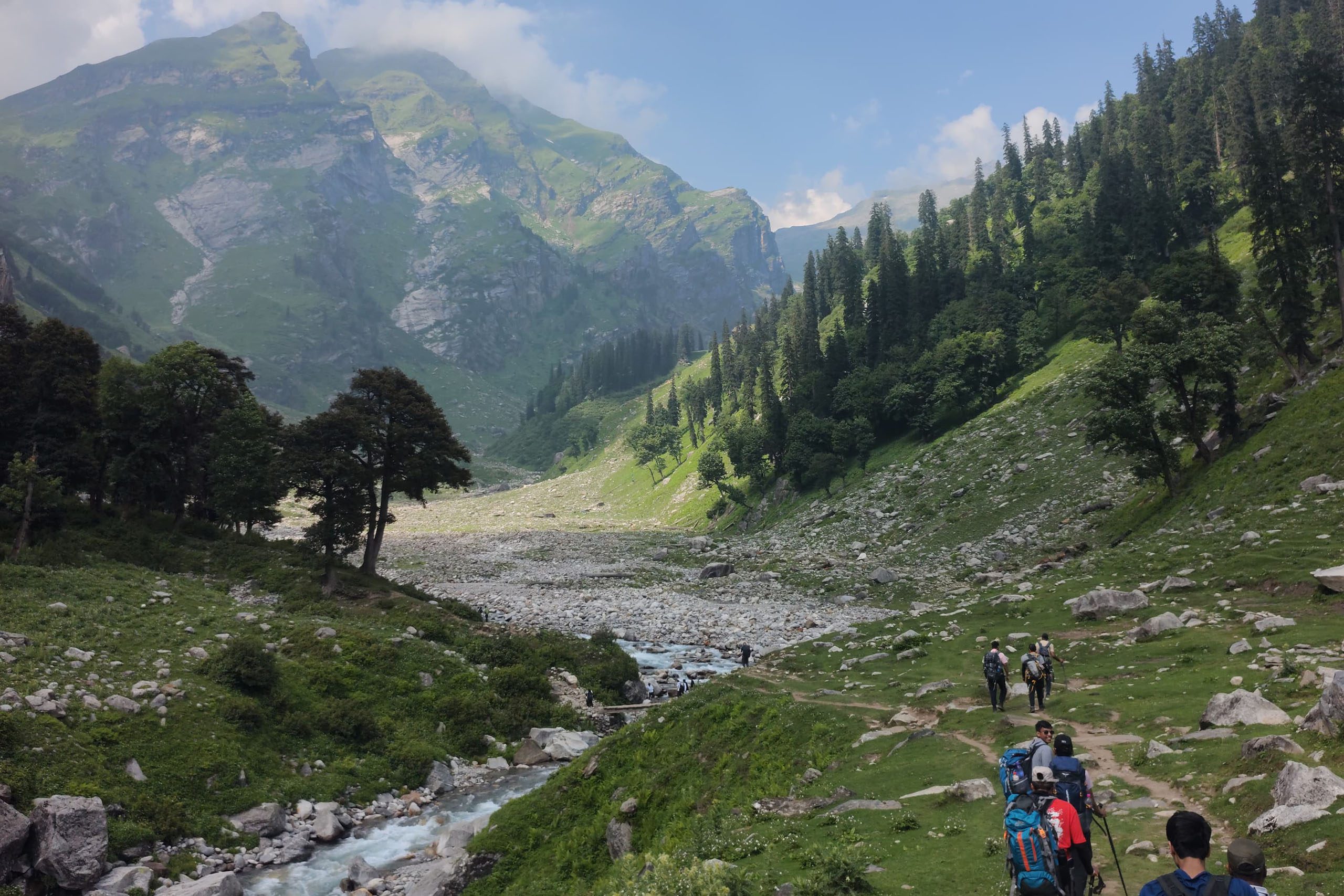
How Difficult Is Hampta Pass Trek? A Clear Guide for Trekkers
The Hampta Pass Trek is one of the most scenic crossover treks in Himachal Pradesh. It’s often praised for its dramatic shift in landscapes—from green valleys to stark deserts. But how difficult is the Hampta Pass Trek, really? Here’s everything you need to know before lacing up your boots.
Hampta Pass Trek Difficulty Level
Moderate. That’s the most accurate way to describe the Hampta Pass Trek.
It isn’t too easy to underestimate, nor is it extremely tough to scare first-timers. With the right preparation, this trek is manageable even for beginners.
Distance and Duration of the Trek
- Total distance: 26 to 30 kilometers
- Duration: 4 to 5 days
- Altitude gain: From 9,800 ft (Jobra) to 14,100 ft (Hampta Pass)
The gradual climb helps the body acclimatize well. But altitude can still be challenging if you’re not physically prepared.
Trek Route and Elevation Challenges
The trek begins at Jobra, near Manali, and ends at Chatru in the Lahaul region. You’ll cross multiple terrains:
- Dense pine forests
- Flower-strewn meadows
- Rocky pathways
- Glacial valleys
- Snow-covered mountain pass
The summit day is the toughest. You gain almost 2,000 feet and descend steeply. The terrain is slippery, especially if snow is present.
Physical Fitness Required
You don’t need to be an athlete, but you do need basic endurance.
Minimum fitness benchmarks:
- Walk 5 km in 40–45 minutes
- Climb stairs for 30–40 minutes without fatigue
- Carry a 6–8 kg backpack during practice walks
Cardio, squats, and stair workouts help improve stamina and leg strength.
Weather Conditions on the Trail
Weather plays a big role in the trek’s difficulty.
- June–July: Expect snow near the pass. The trail can be slippery.
- August–September: Fewer snow patches but unpredictable rain.
- October: Cold, with clear skies and early snowfall.
Sudden weather shifts can affect trail conditions. A good trekking jacket and waterproof shoes are essential.
Altitude Sickness – Is It a Concern?
At 14,100 ft, the oxygen level drops by 35–40%. Though rare, AMS (Acute Mountain Sickness) can affect some trekkers.
Stay hydrated, avoid alcohol, and pace yourself. Symptoms include headaches, nausea, and breathlessness. Inform your trek leader if anything feels unusual.
Support and Safety on the Trek
If you’re trekking with a reputed company like The Dream Treks, you’ll have:
- Certified trek leaders
- Medical kits and oxygen cylinders
- Mules or porters for backup
- Regular health check-ups
Solo trekking is not advised for beginners due to trail navigation and emergency risks.
Technical Skills Required?
No technical climbing or mountaineering skills are needed. However, using trekking poles and microspikes (in snow) makes the trek easier and safer.
Guided groups often provide this equipment as part of the trek package.
Can Beginners Do the Hampta Pass Trek?
Yes, many first-time trekkers complete Hampta Pass successfully. Just ensure:
- You’re physically prepared
- You follow instructions
- You listen to your body
The scenic rewards are worth every step.
Final Verdict – How Hard Is Hampta Pass Really?
Hampta Pass sits comfortably in the moderate difficulty category. With scenic diversity, manageable altitude, and professional guidance, it’s a great choice for trekkers ready to go beyond easy trails.
Train well, pack smart, and embrace the challenge. The mountains will reward you.
Ready to book your Adventure? Contact us!
Follow us on Instagram for regular updates!
Recent Posts
Top 6 Summer Treks in India for Adventure Lovers
How to Reach Tungnath Temple – A Step-by-Step Travel Guide
Quick booking process
+91 9557062166




